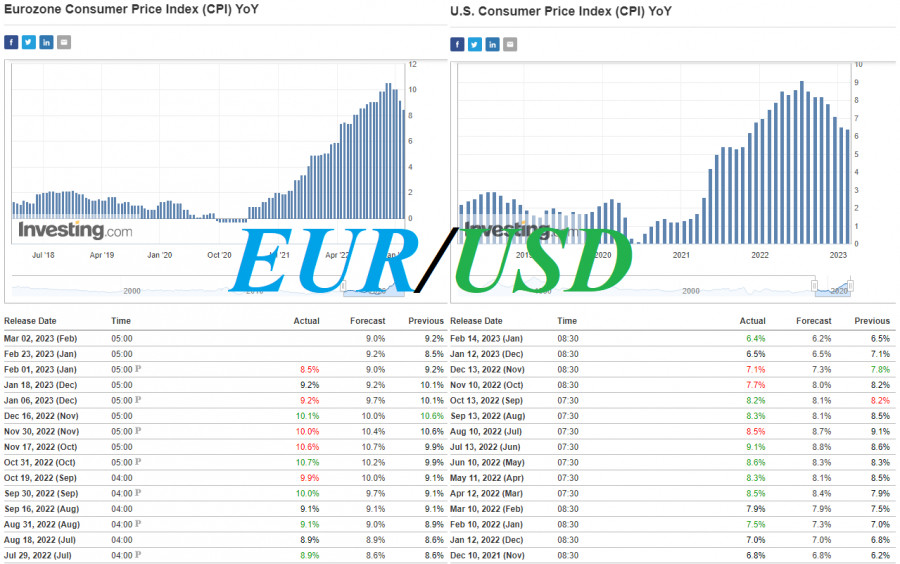

The euro is strengthening in the main cross pairs but cannot escape the pressure of the dollar this month. The EUR/USD pair has sharply declined since start of February, losing about 1.5% in value after reaching a local 10-month high of 1.1032 at the beginning of the month.
The euro is also under pressure by unconvincing macro statistics from the eurozone. Data on industrial production released yesterday declined by -1.1% in December (after the +1.4% growth a month earlier and against economists' forecast of a -0.8% decline) and by -1.7% (after the +2.8% growth in November and against the forecast of -0.7% decline).

Also, according to updated data published on Tuesday, GDP growth in the Eurozone in the 4th quarter of 2022 amounted to +0.1% (+1.9% YoY). The preliminary estimate for the 4th quarter was: +0.1% (+1.9% YoY) with the forecast of +0.2% (+2.2% YoY). The data show a significant slowdown in European GDP growth at the end of 2022, which cannot please investors betting on euro growth.
It has also received little help so far from hawkish statements from various representatives of the ECB leadership. Bank of Spain Governor Pablo Hernandez de Cos yesterday expressed hope that inflation in the eurozone will fall faster than expected, but a strong labor market still contributes to the risks of its new growth.
A recent survey of economists conducted by Reuters showed that they expect a further decline in inflation in the eurozone, but still it will not reach the ECB's target level of 2.0%, at least until 2025.
According to most economists, the ECB may continue raising rates at two more meetings, but what will happen next is still in question.
"The Governing Council's future policy rate decisions will continue to be data-dependent and determined meeting by meeting," the ECB's Economic Bulletin said today.
And yet, investors remain optimistic about the EUR/USD pair, including on expectations of a weakening dollar.
Today, market participants, primarily those who follow the dollar quotes, will pay attention to the publication (at 13:30 GMT) of weekly statistics on jobless claims and the producer price index (PPI) for January. Forecasts suggest an increase in the number of jobless claims and a slowdown in PPI in January to 5.4% from December's 6.2%. These are negative values for the dollar.
There are no significant releases of macro statistics for the eurozone this week. It will appear only at the beginning of next week. And this means that the dynamics of EUR/USD until the end of this week will almost completely depend on the dynamics of the dollar.